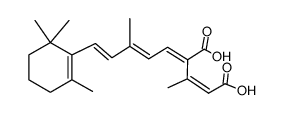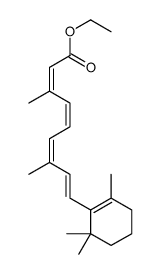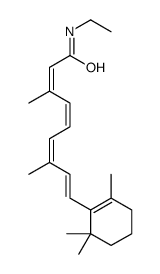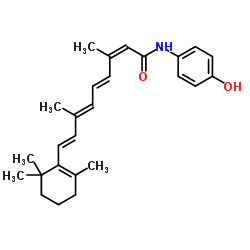4759-48-2
| Name | isotretinoin |
|---|---|
| Synonyms |
EINECS 225-296-0
sotret isotrex ROACCUTANE Retinoin MFCD00079542 Claravis Accutane teriosal (2Z,4E,6E,8E)-3,7-dimethyl-9-(2,6,6-trimethylcyclohex-1-en-1-yl)nona-2,4,6,8-tetraenoic acid Isoretinoin Ro 4-3780 Retinoic acid, 13-cis- cis-retinoic acid 13-cis-ra (13Z)-Retinoic Acid Retinoic acid 13-cis-form (13cis)-Retinoic acid 3,7-Dimethyl-9-(2,6,6-trimethyl-1-cyclohexen-1-yl)-2-cis-4-trans-6-trans-8-trans-nonatetraenoic acid 13-cis-Retinoic acid (2Z,4E,6E,8E)-3,7-dimethyl-9-(2,6,6-trimethyl-1-cyclohexen-1-yl)-2,4,6,8-nonatetraenoic acid 13-ra 13-cis-vitamin A acid Isotretinoin Retinoic acid, (13cis)- Amnesteem |
| Description | Isotretinoin(13-cis-Retinoic acid) is a medication used for the treatment of severe acne. It was first developed to be used as a chemotherapy medication for the treatment of brain cancer, pancreatic cancer and more.Target: RAR/RXRIsotretinoin has been the most effective and long-lasting drug for the treatment of severe acne for more than 30 years and can achieve long-term remission in 70-80% of patients after a single course. The new evidence-based European S3-guideline recommends the use of Isotretinoin as a first-line medication for the treatment of severe papulopustular or conglobate acne, especially when prognostically unfavorable factors are present: family history of acne, early onset, marked seborrhea, localization on the trunk, scarring, psychosocial disability or persistent/late-type acne [1]. Five patients with pityriasis rubra pilaris were treated with isotretinoin from September 1982 through 1985. Isotretinoin at an average dose of 1.16 mg/kg/day for 16 to 24 weeks caused complete or almost complete clearing in four of the five patients [2]. isotretinoin produces significant anti-inflammatory effects by inhibition of monocyte and neutrophil chemotaxis across intact biologic barriers in vivo [3]. Isotretinoin 5 mg/day is effective in reducing the number of acne lesions, and improving patients dermatologic quality of life, with minimal adverse effects [4]. Clinical indications: Acne Toxicity: Isotretinoin is teratogenic. It also causes mucocutaneous side effects suck as cheilitis, dry skin, and dry eyes. |
|---|---|
| Related Catalog | |
| Target |
Human Endogenous Metabolite |
| References |
| Density | 1.0±0.1 g/cm3 |
|---|---|
| Boiling Point | 462.8±14.0 °C at 760 mmHg |
| Melting Point | 172-175 °C(lit.) |
| Molecular Formula | C20H28O2 |
| Molecular Weight | 300.435 |
| Flash Point | 350.6±11.0 °C |
| Exact Mass | 300.208923 |
| PSA | 37.30000 |
| LogP | 6.83 |
| Vapour Pressure | 0.0±2.5 mmHg at 25°C |
| Index of Refraction | 1.556 |
| Storage condition | −20°C |
| Stability | Stable, but probably air and light sensitive. Combustible. Incompatible with strong oxidizing agents. |
| Water Solubility | insoluble |
CHEMICAL IDENTIFICATION
HEALTH HAZARD DATAACUTE TOXICITY DATA
MUTATION DATA
|
| Symbol |


GHS07, GHS08 |
|---|---|
| Signal Word | Danger |
| Hazard Statements | H315-H319-H335-H360 |
| Precautionary Statements | P201-P280-P305 + P351 + P338-P308 + P313 |
| Personal Protective Equipment | Eyeshields;full-face particle respirator type N100 (US);Gloves;respirator cartridge type N100 (US);type P1 (EN143) respirator filter;type P3 (EN 143) respirator cartridges |
| Hazard Codes | T:Toxic |
| Risk Phrases | R36/37/38;R61 |
| Safety Phrases | S53-S26-S36/37/39-S45-S37/39 |
| RIDADR | NONH for all modes of transport |
| WGK Germany | 3 |
| RTECS | VH6440000 |
| HS Code | 2942000000 |
| Precursor 8 | |
|---|---|
| DownStream 5 | |
| HS Code | 2942000000 |
|---|


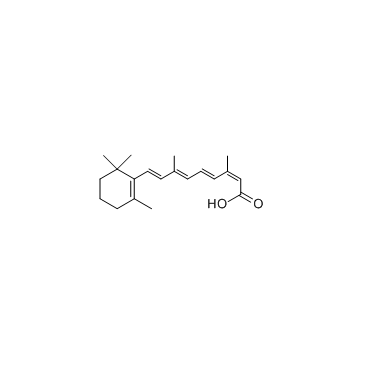
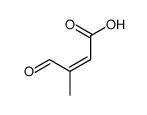
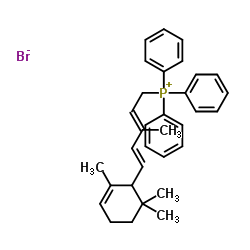


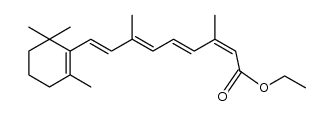
![4-methyl-6-[(1E,3E)-2-methyl-4-(2,6,6-trimethylcyclohex-1-en-1-yl)buta-1,3-dien-1-yl]-5,6-dihydro-2H-pyran-2-one structure](https://image.chemsrc.com/caspic/277/43059-50-3.png)
